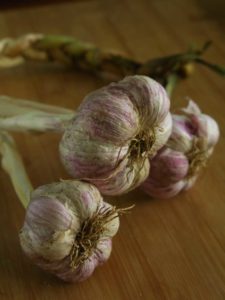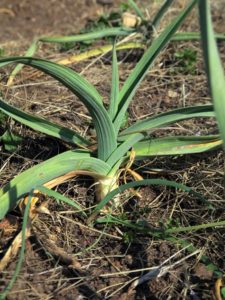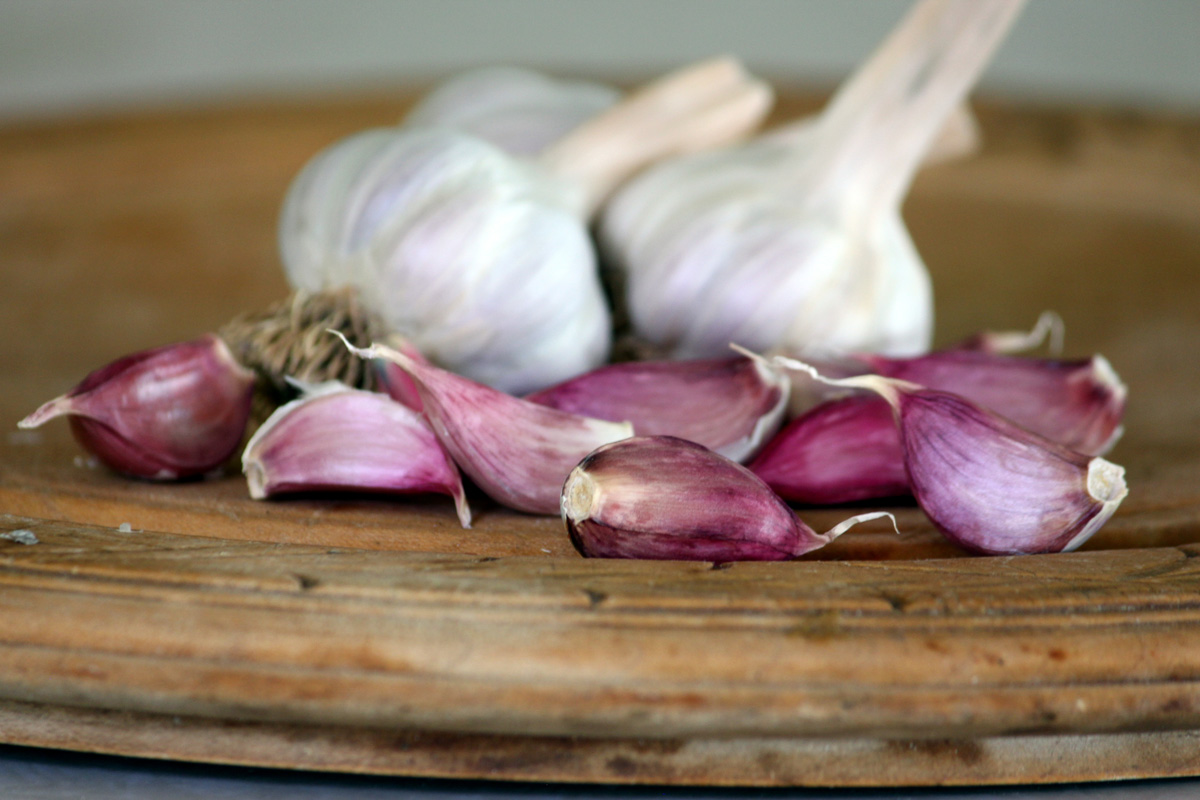What would life be without the flavour enhancing properties of garlic? Fortunately growing garlic is easy, says veggie expert Jane Griffiths.
VARIETIES OF GARLIC TO CHOOSE FROM
There are two types of garlic: hardneck and softneck. Both hardneck and softneck stems can be braided together to form an attractive plait for easy and attractive storage.
HARDNECK
These send up a long flowering stem (called a scape) from the centre of the bulb. Uniform cloves form in a single layer around the stem. They do well in areas with cold winters. Within the Hardneck category there are: Purple Stripe, (including Marbled and Glazed), which have pink or purple striped wrappers and slender cloves; and Porcelain, which has satiny white wrappers and large easy-to-peel cloves.
Types to try: Chesnok Red, a Purple Stripe with bold tasting cloves and Porcelain Hardnecks Leningrad, with a pungent flavour, and Music, which produces high yields with a milder flavour.
ALSO SEE: How to grow turmeric

SOFTNECK
These varieties produce bulbs with more numerous irregularly shaped cloves in concentric layers. They prefer areas with milder winters. There are three varieties in the Softneck category: Silverskin (with strong necks and very white bulbs that store well), Creole (with bright red or pink skin) and Artichoke (with off-white wrappers and cloves with tight skins).
Types to try: Persian Star (an easy- to-grow Purple Stripe) Red Wengers, a Marbled Purple stripe with a strong flavour. Some varieties available from Living Seeds are: Egyptian Pink, a small-cloved, pungent artichoke variety; Egyptian White, a productive Silverskin garlic, and Rose de Lautrec, a superb Creole from France.
GROWING TIPS
- Plant individual cloves directly into the garden from February to April. Choose a spot in full sun and add Talborne Organics Vita Bone Phosphate and Vita Green to the soil. Make holes about three times as deep as the clove and about 10–15cm apart. Place a clove in the bottom of each hole, with the flat side down and pointed side facing up and cover.
- Garlic doesn’t like competition from weeds, so mulch with well-matured compost. This also regulates temperature and moisture. Garlic will spend its first few months developing leaves. Each green leaf above ground will produce one clove below ground, so the more leaves it has, the more clove develop. When weeding or mulching take care not to damage any leaves.
- As soon as day length reaches 13 hours in spring, bulbing is triggered. Warmer weather also encourages bulbing and, during their last six weeks, they can double in size. Some varieties will send up edible flower scapes. Remove these to encourage energy to go into the bulbs rather than the flowers.
- Garlic is a beneficial companion to tomatoes, and when they are young, you can plant them with a quick-growing green such as spinach or lettuce. As with all members of the onion family, garlic will inhibit the growth of beans or peas. Garlic grows well in containers at least 20cm deep. Another option is to plant it in your flower beds – it grows particularly well with roses.

CARE AND MAINTENANCE
- Side dress with Talborne Vita-Grow (2:3:2) eight weeks after planting. In areas with dry winters, garlic should be kept moist throughout the growing season. As spring warms up and the bulbs start forming, watering should be reduced.
- Cutworms can attack young plants; prevent this by adding Bone Phosphate at planting. Fungal diseases such as rust and blight can affect garlic. Prevent by spraying with 1 part milk diluted with five parts water.
HARVESTING GARLIC
It takes 25 to 30 weeks for garlic to be mature. The leaves will begin to turn yellow and die back. When at least 50% of the leaves have turned brown, check one to see if it is ready. (You should see the cloves bulging through the papery covering.)
Storing your harvest for long-term use requires curing: tie a few plants together (leaves and all) and hang them in a dry spot out of the sun for about three weeks. Store them in a cool dark place with good ventilation. Do this while the stems are fresh and flexible.
ALSO SEE: GROWING ONIONS ALL YEAR ROUND


